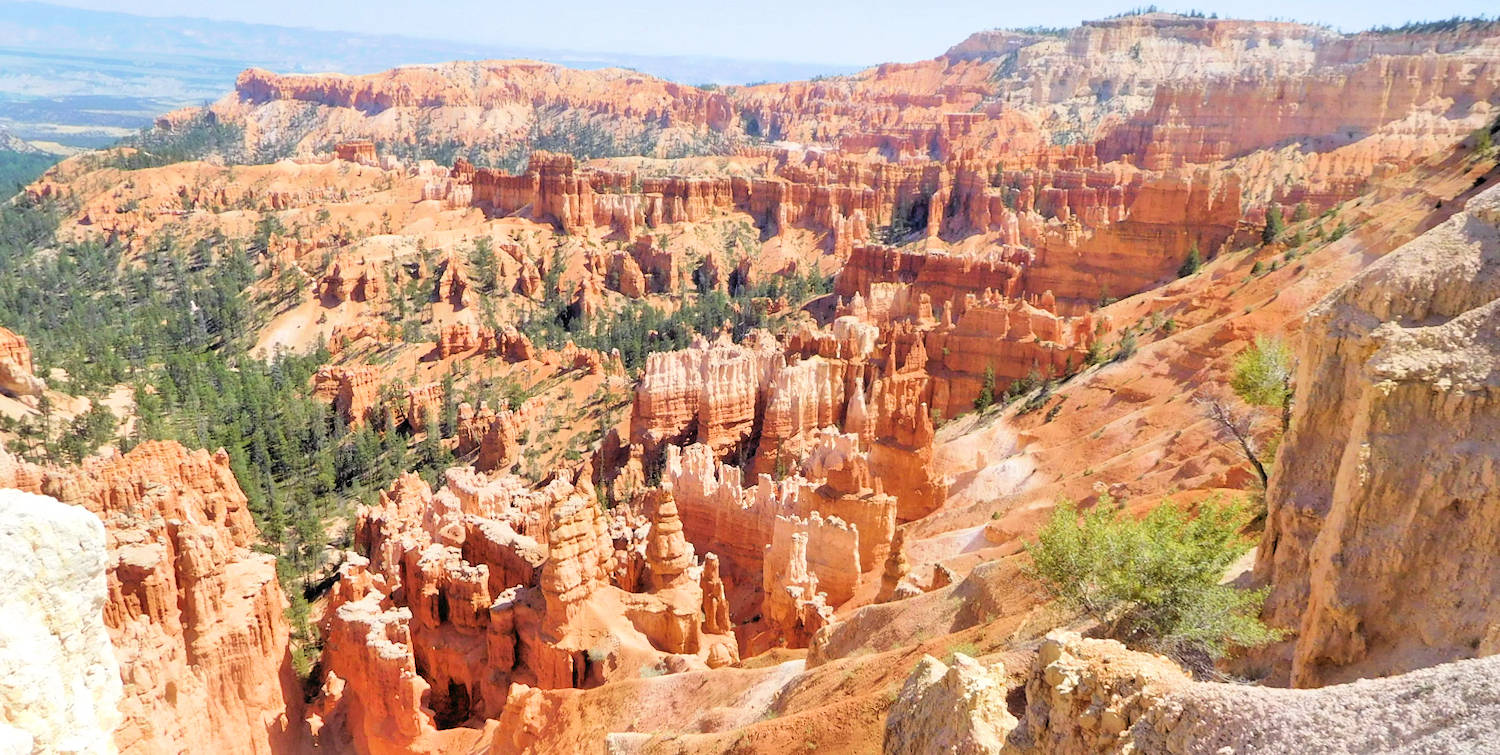
After our stay at the Grand Canyon National Park (see that guide), we headed to Bryce Canyon and then to Zion. These two national parks are only 85 miles apart, but the difference in spectacular scenery seems a world apart.
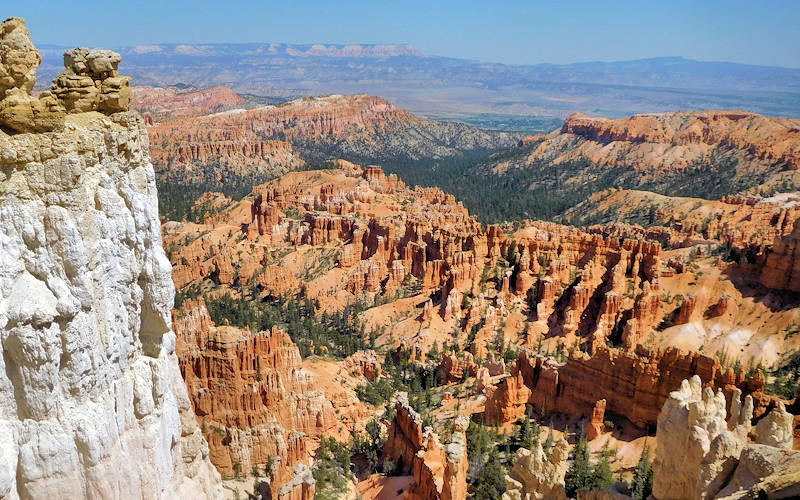
Known for its columns of rock formations called hoodoos, Bryce Canyon looks like a metropolis of sand castles. Since we could not get accommodations inside the park even though we planned six months in advance, we stayed just outside the park at the historic Ruby’s Best Western (basic accommodations). The complex has it all – including a big restaurant and store for supplies and souvenirs. From Ruby’s, take the free park shuttle so you don’t have to drive.
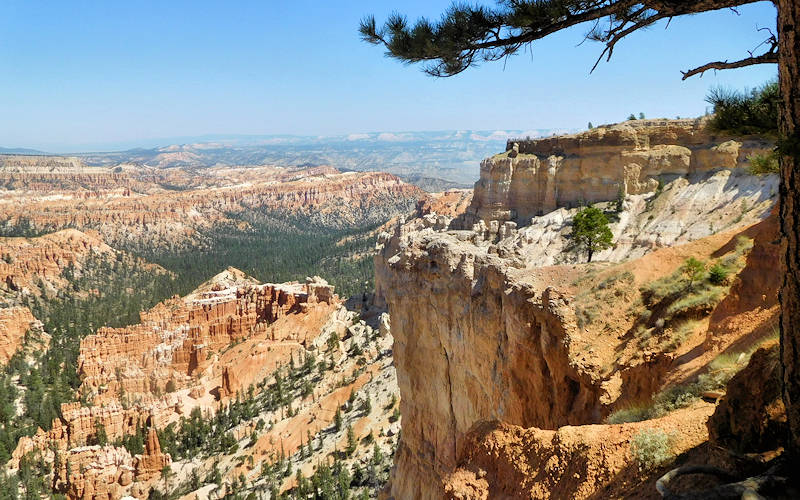
Both the shuttle and the 11-mile Rim Trail connect all the major viewpoints, so you can hike as far as you want and return via the shuttle. The trail is a must with spectacular vistas of the amphitheater all the way, including Bryce Point, Inspiration Point, Sunset Point and Sunrise Point. The shuttle operates April through October.
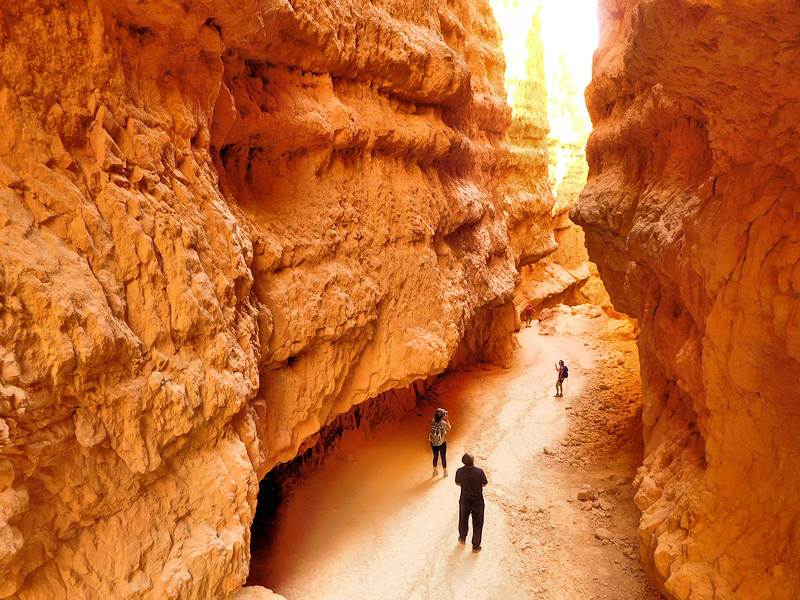
For a quick and scenery-packed hike down into the canyon, the Navajo Loop takes you through “Wall Street” (pic above). It’s about 1.5 miles total with a 550-foot change in elevation. You can easily extend the hike since it connects to other trails.
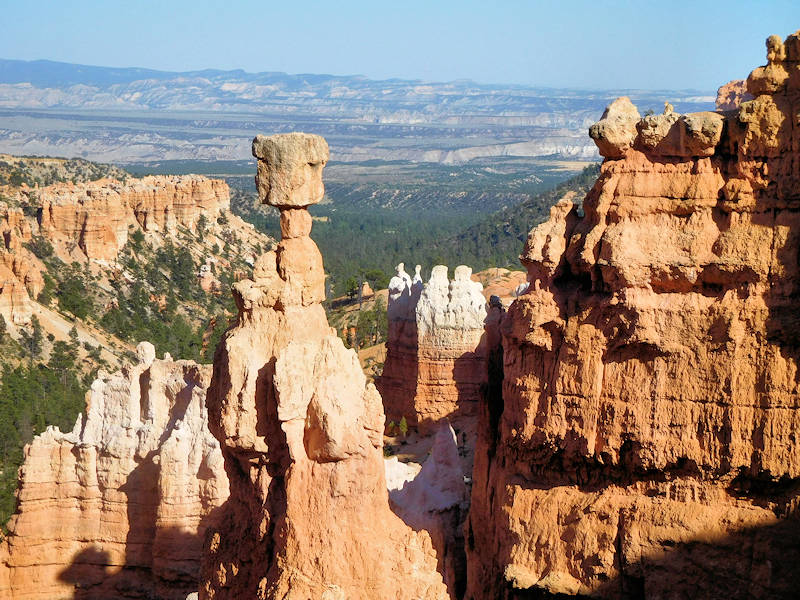
Perhaps the most famous hoodoo is Thor’s Hammer – as seen from the Navajo Loop.
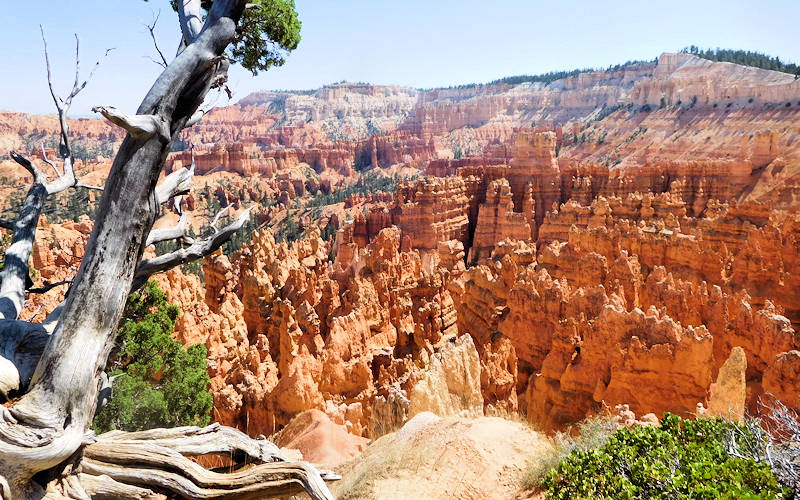
Views like this are common along the Rim Trail at Bryce Canyon.
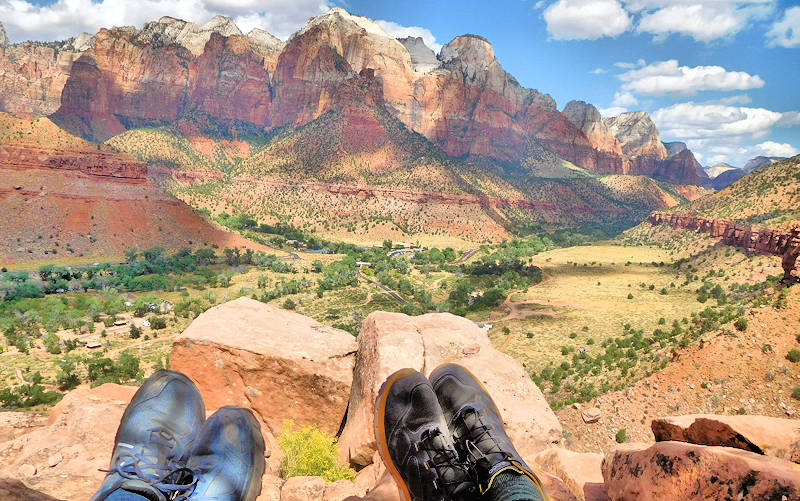
Zion National Park
At Zion, you are based in the valley instead of along the canyon rim like Bryce. Our first hike was the Watchman Trail near the main Visitor Center. Take a picnic to enjoy from the top! The hike is about 3 miles roundtrip, gaining about 650 feet in elevation.
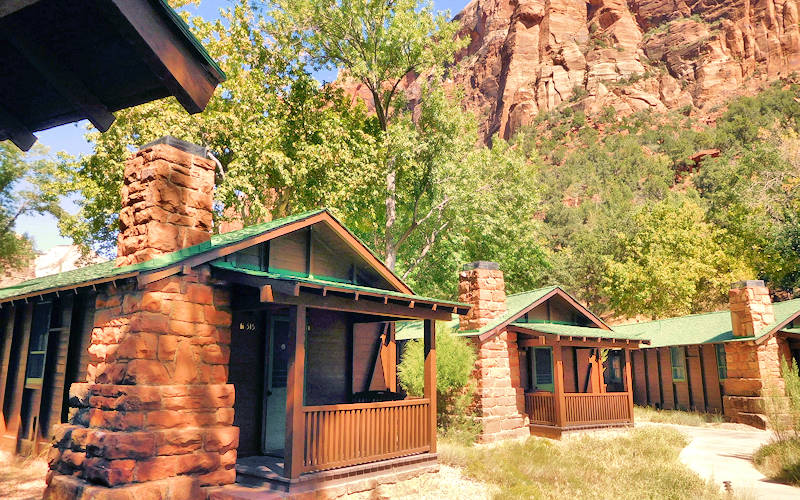
We loved staying the night in our historic, restored cabin at Zion. They are located beside the lodge with a great restaurant, ranger programs and store.
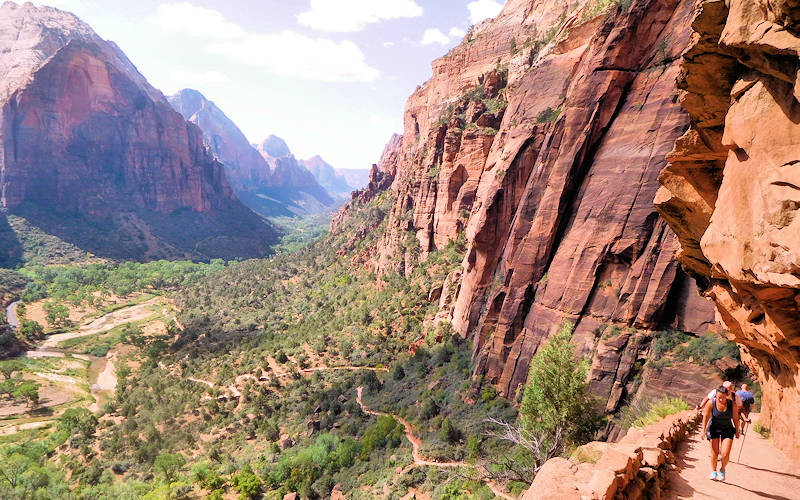
Probably the most popular hike in Zion is the West Rim Trail to Angels Landing. It’s about 2 miles one-way with a 1,500 feet elevation gain to reach the base of the Angels Landing rocky peak.
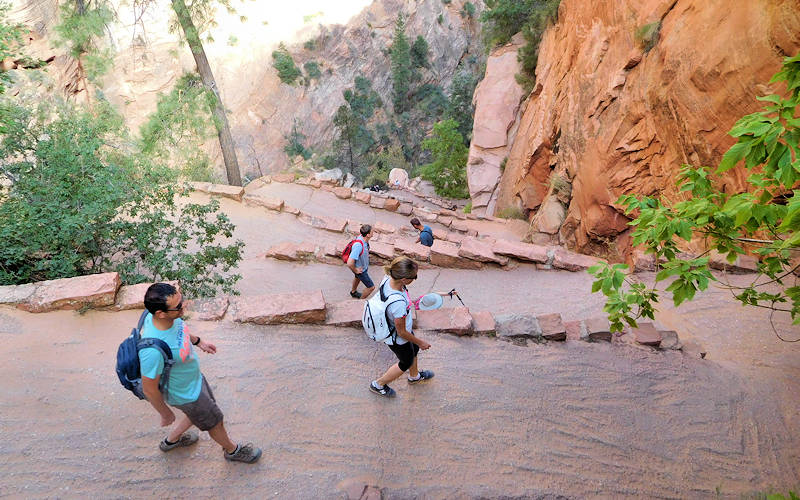
Part of the hike takes you up Walter’s Wiggles, a stack of switchbacks built in 1926.
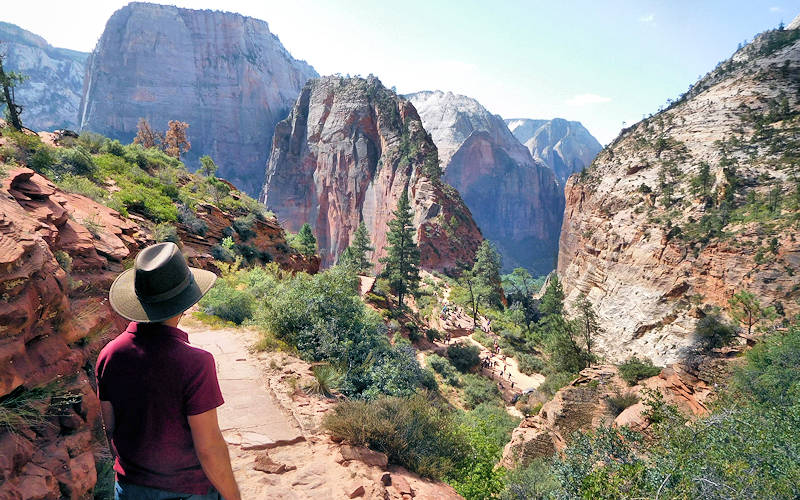
Looking down at Angel’s Landing: To reach the very top of the landing, it’s a very crowded and dangerous climb up the narrow spine of the peak. So we skipped that madness and continued up the West Rim Trail. We hiked another mile, leaving the crowds behind (see all the little dots in the middle of the pic above).
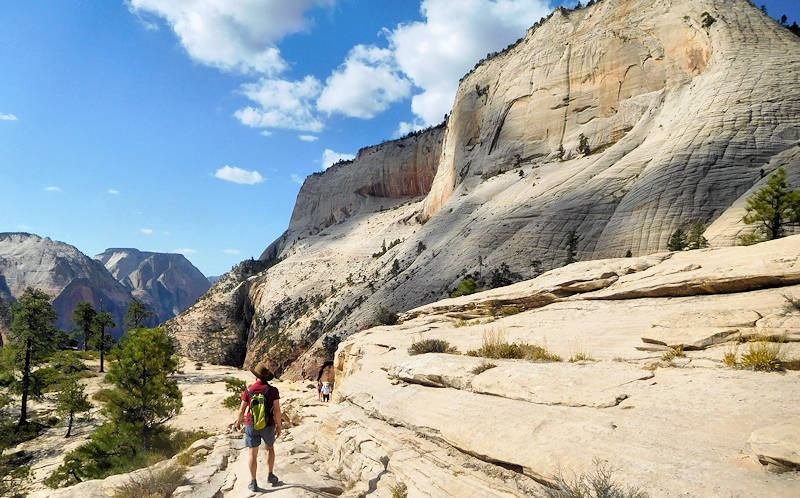
The 360-degree vistas along the West Rim Trail changed constantly – with plenty of natural overlooks for gazing.
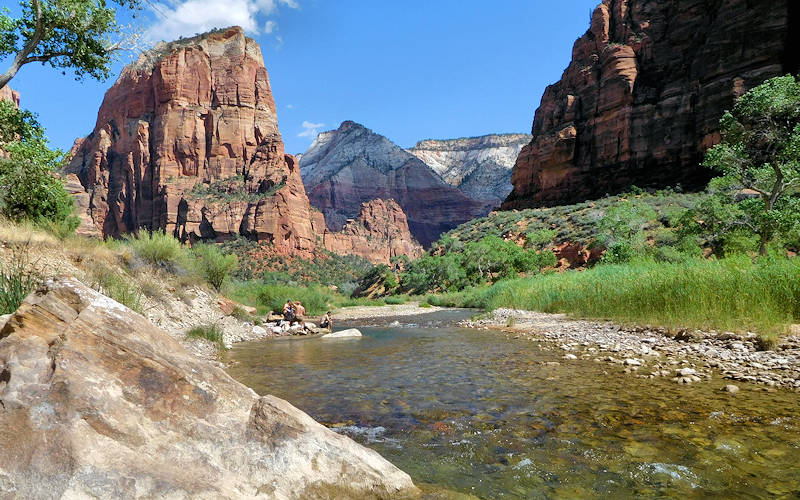
After the hike (Angels Landing is the peak on left), we enjoyed a foot soak in the river.
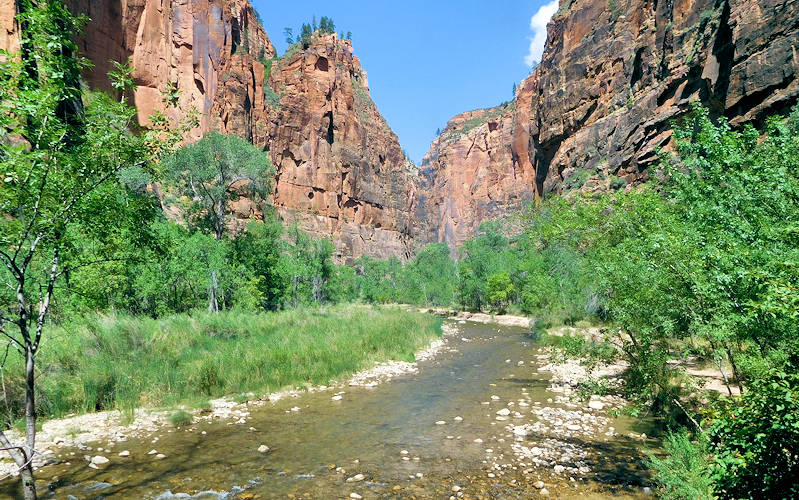
The easy Riverside Walk at the end of the valley is a one-mile paved trail that takes you to the start of the Narrows hike up the river. You can rent special equipment for the river hike just outside the south entrance to the park in Springdale. We saved that adventure for another visit.
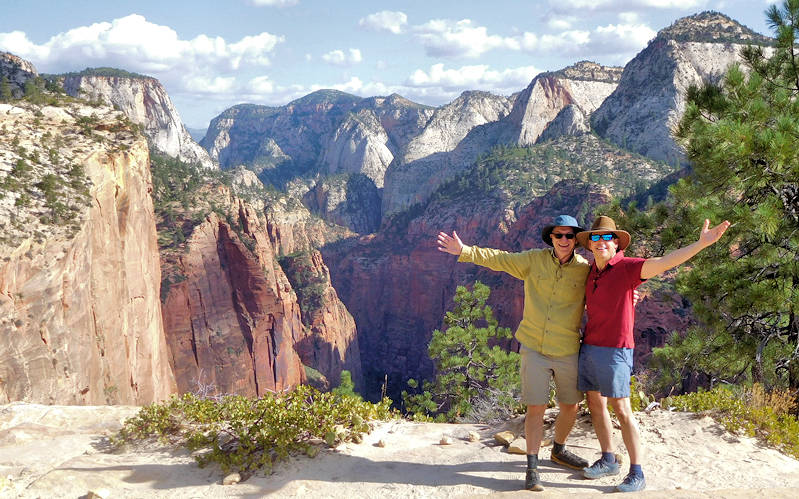
We can’t wait to get back out west to see more national parks. See our Grand Canyon page from this trip. If you love snow, check out our Winter at Yellowstone trip.